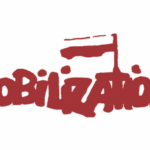Working Paper - 2016
Author: Matteo Cernison
On the 12th and 13th June 2011, about 26 million citizens blocked in Italy a major attempt to privatise the water and sewage networks of the country, approving two referendums that cancelled the main legal tools that were facilitating the access of private actors to the water services. In the years that followed the referendum… moreWorking Paper - 2016
Author: Matteo Cernison
This article discusses in detail the evolution of the complex no oil mobilisation in Abruzzo, observing the mechanisms that allowed the inclusion of a long lasting regional protest in a series of initiatives of national relevance. I describe the emergence of the no oil milieu in the region, observing its development under the lens of… moreWorking Paper - 2015
Author: Georgia Mavrodi
Since the early 1990s, one metaphor has dominated the debates on the construction of a common EU immigration policy: ‘Fortress Europe’. The gradual adoption of a set of common rules on the entry, residence and rights of non-EU nationals was depicted as the building of a wall along the external borders of the EU to… moreWorking Paper - 2012
Author: Jana Warkotsch
When at the height of the 'Arab Spring' Egyptians from all walks of life took to the streets to oust one of the Arab world's most long-standing dictators, it took both Egyptians and outside observers by surprise. This report explores the events commonly described as the January 25 Revolution in Egypt, as well as the… moreWorking Paper - 2012
Author: Daniel P. Ritter
Among cases of transition to democracy from below, the East German one constitutes a particularly challenging puzzle. Whereas social movements taking advantage of an oppositional space within a repressive context have preceded many transitions, the East German case shows little evidence of such large-scale prior opposition. Even when compared to other Eastern European transitions, East… moreWorking Paper - 2012
Author: Daniel P. Ritter
In the late 1980s Czechoslovakia was considered one of the most repressive countries in Eastern Europe and a staunch Soviet ally. In the aftermath of the 'Prague Spring' of 1968, repressed with Soviet help, the regime managed to remove virtually all expressions of dissent. Yet in the fall of 1989 civil society forces inspired a… moreWorking Paper - 2012
Author: Federico Matías Rossi
Romania was the only example of violent regime change in the central and south eastern European milieu, with massive mobilizations both in favour and against change and the execution of the dictator. In other words, there seems to have been an attempted coup d'état in Romania, one that was successful thanks to the unplanned escalation… moreWorking Paper - 2012
Author: Grzegorz Piotrowski
The transition to democracy in 1989 in Central and Eastern Europe is said to be the achievement of the dissident sector. In Poland the biggest power in the democratization process was the Solidarność trade union. At the same time many smaller grassroots groups from that time remain unnoticed and their influence on the democratization process… moreWorking Paper - 2012
Author: Emin Poljarevic
Libya is unlike other states in North Africa mainly because of the distinctive arrangement of different socio-economic and political features it combines. This arrangement came into sharper focus in the wake of the recent collapse of its 40-year-old authoritarian regime. What had begun as a series of peaceful protests against the regime's administrative misconducts became… moreWorking Paper - 2012
Author: Luisa Chiodi
After decades under a Stalinist regime, the latecomer transition in Albania began thanks to the large-scale exodus of hundreds of young people which stimulated the mobilization of university students. In turn, the student movement became the catalyst of a wider social mobilization once fear faded away from December 1990 onwards. These experiences were nevertheless short-lived… more28/10/2025

14/10/2025

Journal Article - 2025
Journal Article - 2023
Journal Article - 2023
Journal Article - 2023
Journal Article - 2023
Monograph - 2023
Monograph - 2022
Monograph - 2022
Journal Article - 2021
Journal Article - 2021